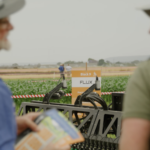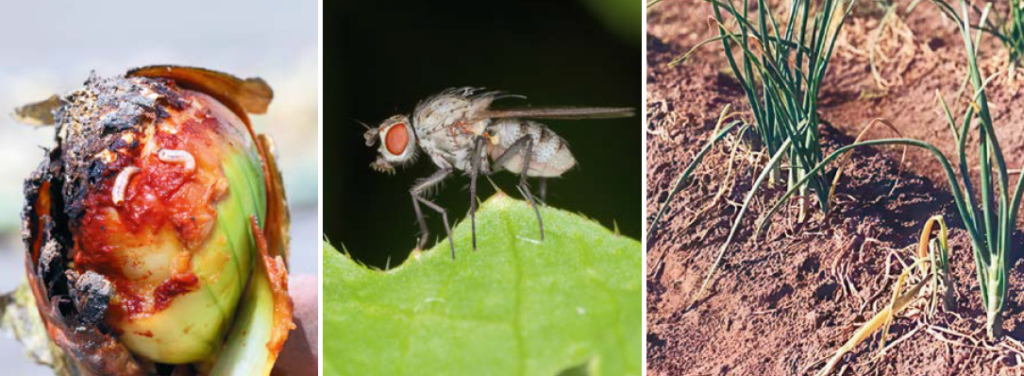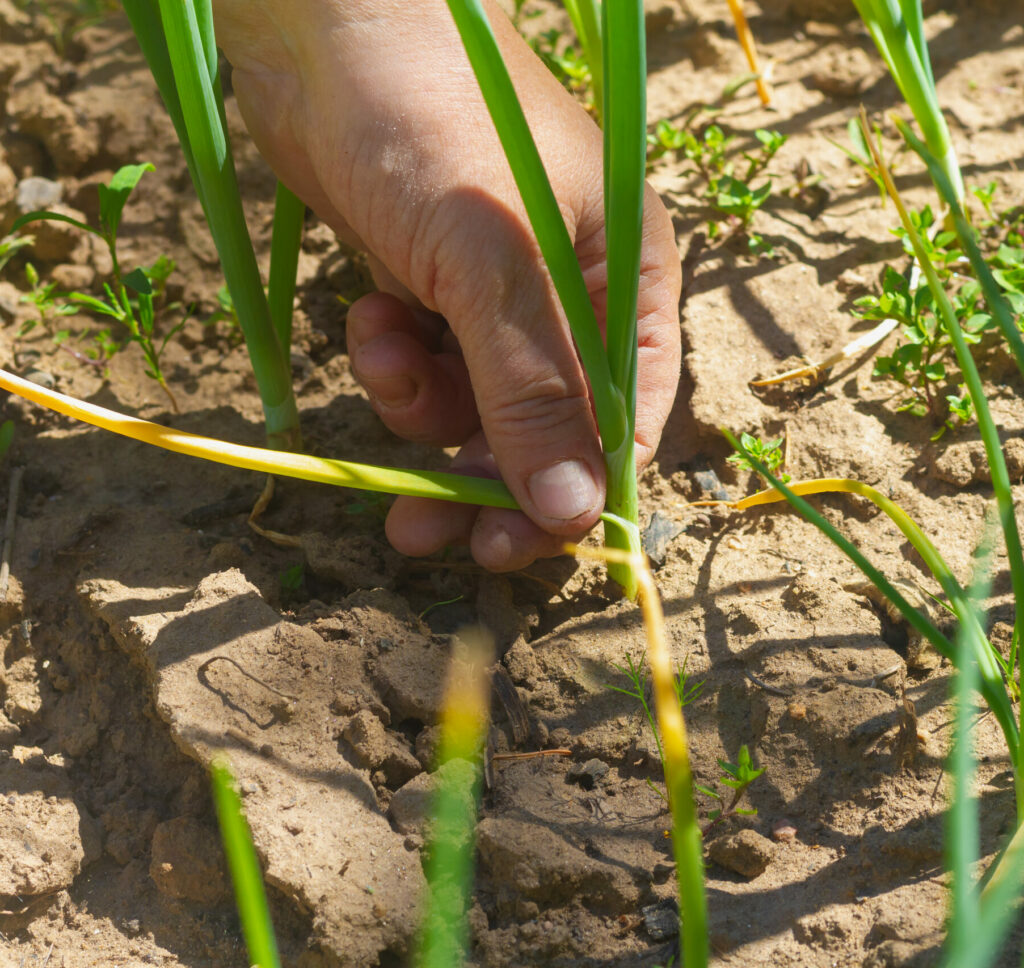
Global agtech on display in an Australian-first at Gatton AgTech Showcase
28 May 2025
The drive for driverless agtech
28 May 2025The onion fly (Delia antiqua) is a major pest that infests onions, shallots, and leeks. Currently exotic to Australia, its introduction could severely impact the onion industry. To avert this risk, strong biosecurity measures are crucial for preventing its entry and establishment.
Known as the onion fly or onion maggot, Delia antiqua originates from Europe and is common throughout the Northern Hemisphere. Although its habitat is expected to increase, it tends to struggle in arid regions. This pest affects plants in the Allium family, such as onions and shallots. The onion fly can cause significant impact, compromising both crop yield and market value.
The onion fly lays its eggs near the base of these crops. Upon hatching, the larvae, or maggots, burrow into the developing bulbs and roots, causing rot and rendering them unsaleable. A single larva can destroy an average of 28 young onion seedlings during its development.
Its host range includes commercially important vegetables like onions, shallots, leeks, chives, and various bunching onions. South Australia and Tasmania are most at risk, as the largest producing states of onions in Australia.
Onion fly: underground attacks
The onion fly’s presence is often indicated by damage from its burrowing larvae, which feed on roots and bulbs, creating tunnels that destroy plant tissue. This internal feeding can lead to secondary infections by bacteria and fungi, causing the plant to wilt, yellow and die.
In spring, adult flies lay small, white, striped eggs at base of onion plants. The hatching larvae move into the soil to feed on the roots and bulbs, disrupting nutrient uptake and causing significant damage. Once fully developed, they pupate in the soil and emerge as new adult flies, continuing the lifecycle. In warmer climates, multiple generations occur in one growing season, leading to unmarketable bulbs and plant death, especially in young seedlings.

L-R. Figure 2. Onion bulb infested with onion fly larvae. Image ©Tomasz Klejdysz. Figure 3. Delia petula. Image ©Tomasz Klejdysz. Onion damage with collapsed leaves. Image ©Development of eCourse B.S (Agriculture).
…chemical options are primarily preventative. Once maggots are inside the bulb, rescue treatments are ineffective.
What to look out for
The first signs of an onion fly infestation is not the fly itself, but the visible decline of the onion plants. Keep an eye out for the following symptoms:
- Yellowing and wilting of the outer leaves (Figure 1).
- Drooping of healthy leaves.
- Plant collapse; in severe infestations, the weakened plant may be unable to support itself and collapse.
- Soft and rotten bulbs with a ‘chewed’ look and dark brown or black discolouration (Figure 2).
- Maggots may be visible on both the outside and inside of infested bulbs.
- Uneven crop growth with patches of wilting and dying plants.
How does it spread?
Preventing the spread of onion fly is crucial. The pest can be spread through:
- Contaminated soil: eggs, larvae or pupae can survive in soil. Movement of soil from infested areas poses a significant risk.
- Infested plant material: avoid moving unharvested plant material or cull onions, as these can harbour maggots.
- Poor biosecurity practices: inadequate hygiene when moving between production sites can unintentionally spread the pest.
How is it managed overseas?
Many overseas treatments rely on conventional (non-integrated pest management or IPM) insecticide treatments at planting in the furrow, furrow drench or seed treatment.
Cultural controls to manage onion flies effectively include multiple strategies such as crop rotation, delayed planting to help evade peak fly emergence periods, physical barriers to prevent adult flies from laying eggs, trap cropping, growing resistant or tolerant varieties like Allium fistulosum (spring onions or shallots) and practice soil disturbance by digging in autumn to destroy overwintering pupae. Lastly, regular monitoring and removal of infested plants and flowering weeds can help limit onion fly populations.
Biological control using natural enemies such as generalist predators, parasitoids and pathogens offers a more sustainable approach. Certain nematodes can effectively parasitise and kill onion fly larvae. Fungal pathogens can significantly impact adult fly populations under favourable conditions. However, these species are highly sensitive to fungicides and are difficult to produce commercially. Several beneficial insects have been reported to prey on onion fly at different stages of its lifecycle. Although, their impact as biological controls may be limited.
Currently, chemical options are primarily preventative. Once maggots are inside the bulb, rescue treatments are ineffective. Foliar cover sprays are ineffective towards adult flies since only a few are in the field at a given time, and they quickly lay eggs before moving on. Registered sprays for onions have a short duration of effectiveness, while seed treatments like coatings and ‘at-plant’ treatments are more effective.

Figure 4. D. platura. Image ©Simon Hinkley and Ken Walker, PaDIL
Figure 5. D. antiqua. Image ©Caroline Harding, PaDIL.
Current management measures for established species
Australia has a similar established pest species called onion maggot or seed corn maggot (Delia platura) (Figure 3). While onion maggot also attacks Allium crops, it is polyphagous, feeding on a wider range of crops including corn, beans, brassicas, potatoes and spinach. The onion fly is more specialised on Allium crops.
Onion maggot (D. platura) flies are brownish grey with darker wings and have three dark stripes on their backs (Figure 4), whereas onion fly (D. antiqua) is yellowish grey with lighter wings and five stripes (Figure 5). Eggs, larvae and pupae are difficult to distinguish visually due to similar size and colour.
Management practices for onion fly are similar to those suggested for onion maggot, including promoting rapid seed germination, delaying sowing if conditions are unfavourable, allowing time for organic matter/manure to break down before planting, using seed treatments, and managing soil-dwelling predators.
What can you do to protect your property?
Preventing the onion fly from establishing in Australia is the most effective approach. Key actions include:
- Recognise risk pathways: understand how the pest could enter (imported plant material, contaminated soil/equipment).
- Source clean planting material: purchase seeds and seedlings only from reputable, certified suppliers. Do not illegally import soil or plant material (Allium bulbs, seedlings).
- Implement farm biosecurity: develop and enforce a farm biosecurity plan.
- Practice ‘come clean, go clean’: ensure all vehicles, equipment, tools, and footwear are cleaned thoroughly before entering and leaving production areas.
- Control visitor access: and ensure they follow hygiene protocols.
- Monitor crops regularly: train staff to recognise the symptoms of onion fly infestation and differentiate it from known pests like D. platura.
- Integrated pest management (IPM): incorporate cultural controls and encourage beneficial insects as part of a broader IPM strategy to build resilience.
- Report suspected detections: if you suspect you have found onion fly, report it immediately to the Exotic Plant Pest Hotline on 1800 084 881. Early detection is crucial for eradication.
- Exotic threat: onion fly (D. antiqua) is not in Australia but poses a major economic risk to the onion industry.
- Damage: larvae (maggots) burrow into bulbs and roots, causing rot and making crops unmarketable.
- Signs: look for wilting, yellowing plants, rotten bulbs, and visible maggots.
- Spread: spreads through contaminated soil, infested plants, and poor hygiene practices.
- Differentiation: distinguished from the existing D. platura pest by its five stripes (versus three) and focus on Allium crops.
- Prevention is crucial: Australia relies on preventing entry via strict biosecurity. Use clean planting sources, practice good hygiene (‘come clean, go clean’), monitor crops closely.
Preventative biosecurity strategies are significantly cheaper and more effective than managing an established pest infestation long-term.
Four life stages of the Onion fly
Adults are 5-7mm in length, yellowish grey with five dark stripes on the thorax, light yellowish wings, black legs and antennae. Similar in appearance to a common house fly. ©Tomasz Klejdysz.
Eggs are elongated, white and about 1mm in length. Adult flies deposit eggs on the soil surface close to the stems. Females can lay 100-500 eggs during their lifetime.©eCourse B.S (Agriculture).
Larvae (maggots) are tapered and creamy-white in colour and 8-10mm in size upon reaching maturity. ©Bayer Crop Science UK
Pupae are oval-shaped, reddish-brown to dark brown, and about 6-7mm long. Pupation occurs in the soil.
©Meigen, 1826. Bugwood.org



